Introduction
Bengal has been a land of a diverse cuisine since ages. Whether it’s the popular sweets of Bengal such as rosogolla and sandesh or the spicy delicacies like kosha mangsho and chingri maachher malaikari, the popularity and diversity of Bengalis remains unmatched when it comes to food. But there is one food item which is an integral part of every bengali household since centuries and that is the iconic ‘Shukto’. Shukto is a type of a vegetable stew, bitter in taste served with rice during lunch times on every special occassion and festival. The term ‘Shukto’ comes from the Sanskrit word ‘Shukuta’ which literally means bitter jute plant’s dried leaves. This term was mentioned in Bengali narrative poetry during the 15th and 16th centuries.
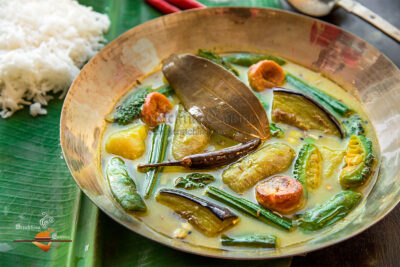
Origin of Shukto and how it flourished
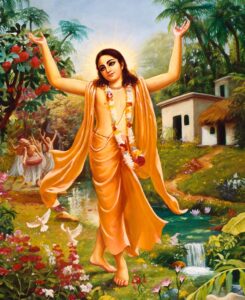
The era or time period in which shukto originated is a matter of great debate. Most people and scholars believe that shukto has ancient origins. This is because shukto is a bitter dish with bitter gourd being an essential ingredient. The benefits of having bitter food items has many advantages listed in the Ayurveda practices and traditions which itself has a long history in the lands of Bengal. The trait of bitterness and bitter foods is emphasised upon heavily in Bengali culture and household and that’s why bitter gourd (korola in Bengali), neem leaves and watercress (helencha saag in Bengali) are important foods in this culture. The mention of shukto is found in medieval period Bengali texts like Mangal Kavya. Chaitanya Mahaprabhu also loved shukto and it was an important dish in his day, and its nutritional habits as mentioned in ‘Charitamrita’. For this reason it is believed that shukto is a delicacy which has a rich history and journeyed through ancient, medieval and modern ages and in 2025 it’s still an essential part of Bengali cuisine.
Whether shukto originated in eastern side of Ganga or the western side of it is also a great debate. Bangladesh has always been a place where bitter gourds are grown in large numbers and the presence of neem trees is also quite common there. On the basis of this it is argued that the tradition of consuming bitter or ‘teto’ started there. However there was a belief in the post colonisation period that shukto is influenced by a Portuguese dish in which bitter gourd was an essential ingredient. They used it as a mouth freshener. Later Bengalis liked the taste of it and adopted it into their culture by adding more ingredients and vegetables. This theory was widely disregarded by most of the food historians and scholars and they stuck to the view of shukto being inspired from ayurveda practices.
Different types of Shukto
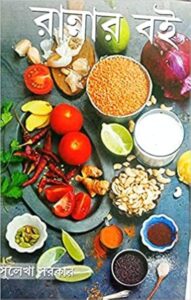
Shukto has many different versions and ways of cooking rather than just one. Sulekha Sarkar’s cookbook Rannar Boi describes shukto as a dish cooked by braising vegetables in oil with spices like panch phoron {literally means “five seeds” containing fenugreek seed (methi), cumin seed (jeera), nigella seed (kalonji), wild celery seed (radhuni) and fennel seed (sauf)} and mustard. In the end a finishing touch should be added with either rice flour slurry, ground poppy seeds or ginger. But this recipe also changes with different regions.
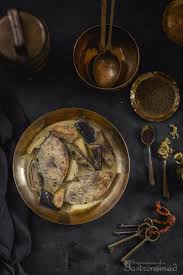
Development professional and food historian Tanushree Bhowmik says that in some regions shukto has no elements of bitterness at all, a trait predominant in the taste of the dish. Vegetables like pointed gourd, green plantains, sweet potatoes, brinjal and long beans are cooked with ghee with the help of fenugreek seeds, mustards and some ginger for flavour.
However, the inclusion of a slurry produced with rice flour and sesame seeds mashed into a paste is what distinguishes the dish from other types of the same.
Another version includes the addition of poppy seed paste popularly known as posto baata in bengali, often mixed with mustard paste as well. It enhances the taste and texture of the gravy by making it more nutty which enhances and compliments the bitterness of shukto. Bhowmik says,”Posto (poppy seeds) is also known for its cooling properties, which is one of the reasons why it’s added to what is essentially a summer dish”. Pragyasundari Devi who happens to be the niece of Rabindranath Tagore wrote one of the earliest cookbooks in the Bengali ‘Amish o Niramish Ahaar’. In this book she talks about adding a mix of milk, maida and sugar which makes a flavour which was unique to the flavour of thakurbari (Rabindranath Tagore’s birthplace and ancestral home). This mix somewhat reduces the bitterness a bit. Bhowmik further adds to this and says addition of milk is more of an urban practice probably taken from the Portuguese.
In the Western part of Bengal this traditional version of shukto has gained a lot of fame and popularity and still continues to hold that level of fame which also signifies the vaishnav influence in this part of the region. But if we move to the riverine eastern side of Bengal or Bangladesh, we can see the addition of fish in shukto. Typically fishes like magur, shingi, mrigel, rui and kangla are more commonly used. Besides these fishes, rohu fish and the infamous elish or hilsa is also sometimes used.
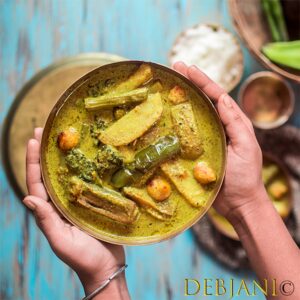
Pop Culture References
The 1972 Rajesh Khanna starrer film ‘Bawarchi’ in a scene talks about cooking shukto along with other dishes. But more importantly a 2019 bengali movie ‘Ahaa Re!’ which has a theme based on bengali cuisine with shukto being an important dish shows how shukto is still relevant as a popular dish even now in the 21st century.

Conclusion
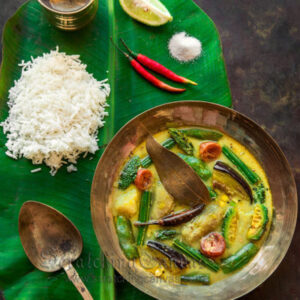
Hence we see that shukto has a unique place in the Bengali cuisine and household among many other popular dishes of Bengali cuisine such as different curries of fish, kosha maangsho, the sweets and the street foods too. It has a cultural as well as nutritional value. From figures like Chaitanya Mahaprabhu to the family of Rabindranath Tagore everyone had shukto with great pride. A dish rich in taste along with its bitterness shukto has a lot of nutritional value as well which is why this dish becomes a must for every Bengali to have. It keeps the stomach cool and accounts for a great tummy health with a great taste of course. People in different regions of Bengal have made many versions of it using different ingredients. Some of them add poppy seed paste while some of them don’t hesitate to make maach shukto to keep their taste buds happy. The origin of this dish could be widely debated but it’s fame, popularity and relevance isn’t debatable at all.
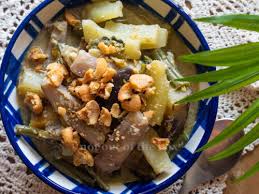
Bibliography
1.The many ‘shuktos’ of Bengal (2021). (Mint)
2.https://indroyc.com/2024/07/12/bengalis-and-their-love-for-bitters-the-story-of-shukto/
3.Shukto: The Bitter Culinary Gem From Bengal (Times Now)
4.The tale of ‘teto’: Why we love ‘shukto’ and the bevy of Bengali bitters (The Telegraph online)
5.What’s Bitter & Beloved of Bengalis? Shukto, A Culinary Gem With a Story to Tell
7.Our Food Their Food: A Historical Overview of the Bengali Platter
8.Chitrita Banerji (1997). Bengali cooking : seasons and festivals. London Serif




